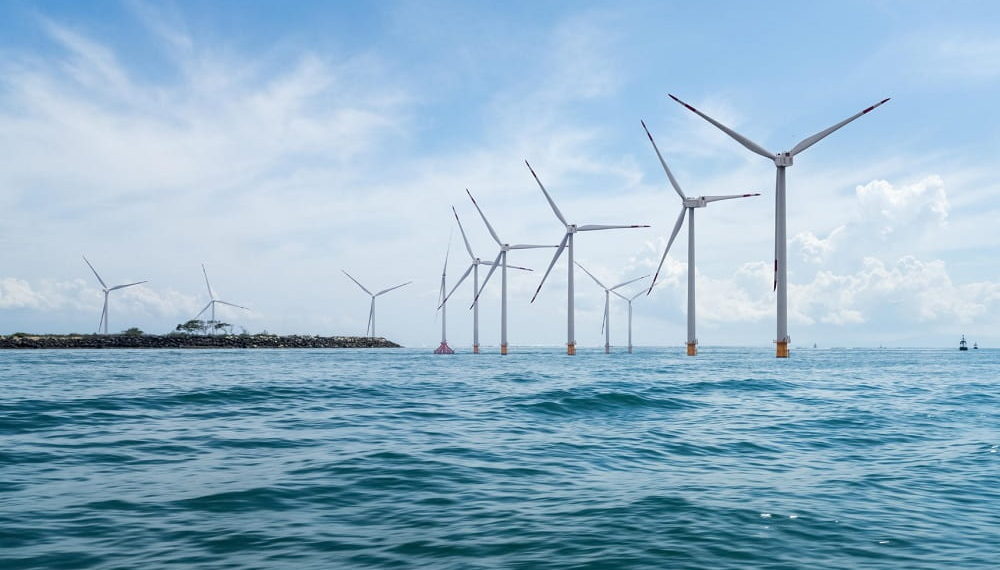Asia is set to become a leader in offshore wind, with its share in the global offshore wind market expected to grow from 24 per cent in 2019 to 42 per cent in 2025 and the rest of the decade. China is expected to continue its domination of the Asian offshore wind market in the first half of this decade, with more than 70 percent market share. However, its market share in the region is expected to drop from 2025, when more utility-scale offshore wind projects get connected in emerging markets – Taiwan, Japan, South Korea and Vietnam. The top five markets in the region in new installations over the next decade will be China (52GW), Taiwan (10.5GW), South Korea (7.9GW), Japan (7.4GW) and Vietnam (5.2GW).
China was the world’s No. 3 offshore market in total installations as of the end of 2019 (after the UK and Germany). Considering extraordinary volume of new capacity (4-5 GW/year) will be built in 2020 and 2021, GWEC Market Intelligence expects China will surpass the UK as the world’s largest offshore market in total installations by 2021, if not 2020. Annual offshore wind growth in China in the future will depend on whether subsidies provided by provincial governments will be available and whether offshore wind industry can reach grid parity before 2025.
However, excluding China, the Asian offshore wind market is still at a very early stage of development. Each market is facing the challenge of developing a local supply chain as well as the necessary competencies and capabilities to build a sustainable and cost-competitive offshore wind industry.
In the case of Taiwan, its offshore wind ambition is widely recognized, driven by the need to retire coal plants and a “green economy” vision. All eyes are now on Taiwan as it will connect 5.5 GW of new offshore wind by 2025 and another 10 GW will be tendered by the government through the Round 3 auctions for commissioning by 2035, providing the long-term visibility needed to generate a local offshore wind industry and supply chain.
Critical to the steady progression of the market will be the government’s localisation strategy, which aims to consolidate the entire supply chain in Taiwan, but how flexible the localisation requirements are will be key to determining whether the nascent offshore wind industry can develop into a sustainable and competitive market. These key challenges and opportunities for boosting growth of offshore wind in Taiwan will be discussed at the Global Offshore Wind Summit – Taiwan Virtual, organised by GWEC and the European Chamber of Commerce Taiwan – Low Carbon Initiative on the 12-14 October 2020.
At this start of a new decade, the momentum for offshore wind in South Korea is picking up with the re-election of President Moon Jae-in in April this year that has new vision and targets for the Asia’s fourth-largest economy (but one of the world’s most polluted countries); an indigenous and strong supply chain together with international partnerships eyeing for the offshore developments in this country. To reach the “Renewable Energy 3020” target of 20 percent renewables in the power mix by 2030, South Korea is targeting 12 GW of new offshore wind capacity to be built by the end of this decade.
As for Japan, a country that has been stymied by a lack of ambitious offshore wind targets and a cumbersome permitting and licensing framework, however there has been a growth in momentum at both the policymaking and industry level since 2017. In July 2020, the government nominated four offshore wind zones and launched the first offshore wind auction for a floating offshore wind farm offshore from Goto City. Japanese offshore wind market is expected to take off from the mid of this decade.
Vietnam, the most promising offshore wind market in South East Asia, has more than 500 MW of offshore wind projects in the pipeline that is expected to come online before the current FiT deadline of November 2021. Taking into account the recent consideration of a FiT extension to the end of 2023 followed by an auction system from 2024, GWEC Market Intelligence predicts a total of 5.2 GW offshore wind capacity to be built between 2020 and 2030.
As the market continues to grow, innovations in the sector such as floating offshore wind, larger and more efficient turbines, as well as Power-to-X solutions will continue to open new doors and markets for the sector. Countries such as Japan and South Korea that have deep waters will have to leverage on the technological advancement of floating turbines, that look set to take off over the next few years and potentially becoming a springboard for floating wind all around the world.
Offshore wind is one of the world’s fastest-growing energy sources, with strong year on year growth expected across the next few decades. It is clear that markets across the world are now opening their eyes to the huge business and investment opportunities that offshore wind can offer, as governments around the world recognise the role that the technology can play in kickstarting post-COVID economic recovery through large-scale investment, creating jobs and bringing economic development to coastal communities. With its scale, offshore wind has the real opportunity to replace traditional energy sources, driving the global energy transition.






































